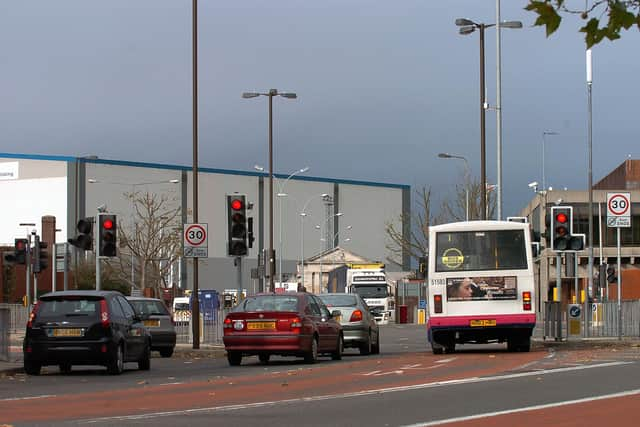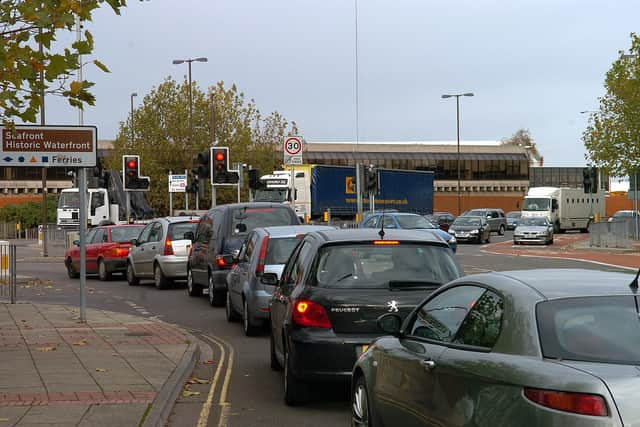New data shows slight improvement in pollution in Portsmouth last year but air quality 'still falling below'
and live on Freeview channel 276
According to air monitoring tubes set up across the city 12 locations recorded average level of nitrous dioxide (NO2) above 40 micrograms per cubic metre of air (ugm-3) - which is the government safe standard - last year.
In 2018, 13 locations recorded mean levels above 40ugm-3, however, between those years an additional 43 monitoring stations were set up meaning there was more chance of recording high pollution levels.


Advertisement
Hide AdAdvertisement
Hide AdFor both years the worst offending area was along Alfred Road - between the Cascades Shopping Centre car park and Victoria Park, with three areas exceeding 40ugm-3 in 2019. The average readings were clocked as 48ugm-3, 52.52ugm-3 and 46.90ugm-3.
Portsmouth council's environment boss, Councillor Dave Ashmore, said: 'There is improvement but still falling below where we should be. It's on the right trajectory but obviously we need to make it get there quicker.
'Retrofitted buses were one of the biggest reasons for the improvement because the older buses were chucking out a lot of pollution.
'We've also worked on better traffic management along roads.'


Advertisement
Hide AdAdvertisement
Hide AdData for the period 2019 in comparison with 2018 also revealed that the annual mean levels decreased at all of Portsmouth's 27 long-term monitored locations.
And the city's five continuous air quality monitoring stations showed a drop in NO2 compared to in 2018.
It comes as the council is set to impose a government ordered clean air zone, which will charge certain non-compliant vehicles to enter the the south west of the city.
Cllr Ashmore added: 'We want everything we do, including the clean air zone, to improve air quality in the whole of the city - not just in that area. And we want it to have a lasting effect, not just to hit the targets as a one off.'
Advertisement
Hide AdAdvertisement
Hide AdOther roads registering high levels of NO2 in 2019 were London Road, Eastern Road, Southampton Road and Hope Street.
Southsea GP, Jonathan Lake, who has recently been involved in campaigning for better cycling and pedestrian networks in the city, explained some of the risks linked to NO2. He said: 'High levels of nitrogen dioxide are associated with increased risk of chest problems such as asthma in children and can flare up lung conditions like asthma and chronic bronchitis, leading to more people needing to go into hospital.
'People with heart disease can also be adversely affected by nitrogen dioxide and breathing polluted air can also affect the health of the unborn baby.
'We know there are 12 places in Portsmouth where nitrogen dioxide levels are still exceeding recommended levels, so cleaning the air up in the city is essential to improve our health.'
A message from the Editor, Mark Waldron
Thank you for reading this story. The dramatic events of 2020 are having a major impact on our advertisers and thus our revenues.
The News is more reliant than ever on you taking out a digital subscription to support our journalism. You can subscribe here for unlimited access to Portsmouth news and information online.
Every subscription helps us continue providing trusted, local journalism and campaign on your behalf for our city.
Comment Guidelines
National World encourages reader discussion on our stories. User feedback, insights and back-and-forth exchanges add a rich layer of context to reporting. Please review our Community Guidelines before commenting.